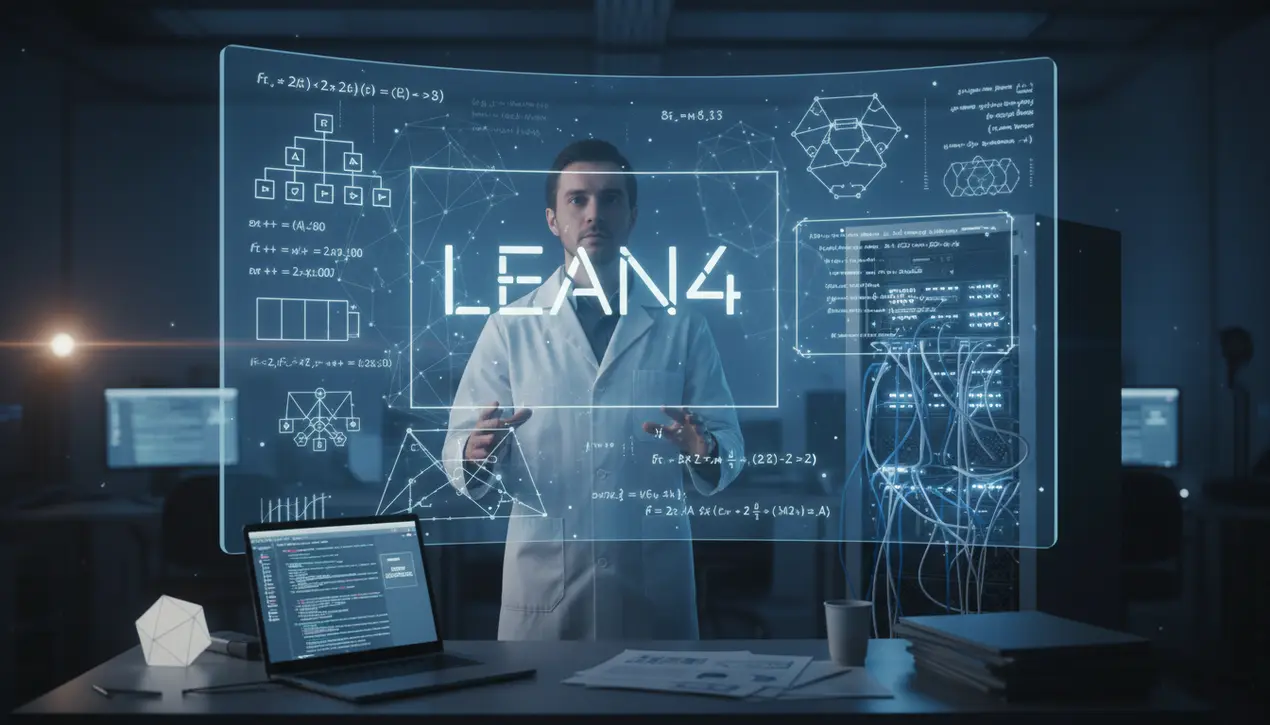
AIai safety & ethicsResponsible AI
Lean4: How Theorem Proving Gives AI a Competitive Edge
DA
Daniel Reed
12 hours ago7 min read4 comments
Large language models have demonstrated remarkable capabilities across numerous domains, yet their inherent unpredictability and tendency toward hallucination present fundamental limitations in high-stakes environments where absolute reliability is non-negotiable. The emergence of Lean4, an open-source programming language and interactive theorem prover, represents a paradigm shift toward injecting mathematical rigor into artificial intelligence systems.This isn't merely an incremental improvement but a foundational change in how we approach AI reliability, moving from probabilistic confidence to deterministic certainty through formal verification. Every theorem or program formalized in Lean4 undergoes strict type-checking by its trusted kernel, yielding a binary verdict—either the statement is proven correct or it fails, leaving no room for ambiguous or partially correct outputs.This mathematical precision stands in stark contrast to the probabilistic nature of neural networks, where the same query can yield different responses, creating what I see as a fundamental trust deficit in critical applications. The core advantage lies in Lean4's ability to provide what the mathematical community has long recognized as the gold standard for truth: verifiable proof.This capability is now being leveraged to create what I consider the most promising safety architecture for next-generation AI. Research frameworks like Safe and startups such as Harmonic AI are pioneering systems where each step of an LLM's chain-of-thought reasoning is translated into Lean4's formal language and verified.If the proof fails, the system immediately flags flawed reasoning—effectively creating a real-time hallucination detection mechanism. Harmonic's Aristotle system exemplifies this approach, having achieved gold-medal level performance on International Math Olympiad problems not merely by generating answers but by producing Lean4-verified proofs for every solution.This represents a qualitative leap beyond current AI capabilities; where other models might reach similar performance levels through pattern recognition, Aristotle provides mathematically guaranteed correctness. The implications extend far beyond mathematical problems.We're seeing early experiments where AI systems for finance could generate proofs demonstrating compliance with accounting regulations, or scientific AI assistants could provide hypotheses with formal verification of consistency with physical laws. This pattern of using Lean4 as a rigorous filter for unverified results addresses what I view as the core challenge in AI alignment: moving from 'the model seems correct' to 'the model can prove it's correct.' Beyond reasoning tasks, Lean4 is poised to revolutionize software security in the AI era. The longstanding challenge in formal methods has been the labor-intensive nature of writing verified code, but now LLMs offer the potential to automate this process at scale.Benchmarks like VeriBench are pushing models to generate Lean4-verified programs from ordinary code, with experimental agent approaches achieving nearly 60% success rates—a promising indicator that future AI coding assistants might routinely produce machine-checkable, bug-free code. The strategic significance for enterprises, particularly in sectors like finance, healthcare, and critical infrastructure, cannot be overstated.Imagine receiving not just AI-generated code but formal proofs guaranteeing the absence of buffer overflows, race conditions, or security policy violations. This represents the maturation of techniques already standard in high-stakes fields like medical device firmware and avionics systems into mainstream AI development.The growing adoption across major AI labs underscores this trend's momentum. OpenAI and Meta's 2022 demonstrations of models solving mathematical problems through Lean4 proofs marked a watershed moment, showing that large models could effectively interface with formal theorem provers.Google DeepMind's AlphaProof system achieving silver-medal level performance on International Math Olympiad problems further validated that Lean4 enables new heights of automated reasoning rather than merely serving as a debugging tool. The vibrant ecosystem around Lean—including the mathlib library and community contributions from renowned mathematicians like Terence Tao—creates a virtuous cycle where human expertise, community knowledge, and AI capabilities converge to advance formal methods.However, significant challenges remain before this approach becomes mainstream. The scalability of formalizing real-world knowledge in Lean4 requires substantial effort, current LLMs still struggle to generate correct proofs without guidance, and organizations must develop expertise in formal methods.Yet the trajectory is clear: as AI systems increasingly impact critical infrastructure and human lives, the demand for verifiable correctness will only intensify. Lean4 provides a principled framework for ensuring AI systems do exactly what we intend—nothing more, nothing less—with mathematical proof as the ultimate validation. We're witnessing the early stages of AI's evolution from intuitive apprentice to formally validated expert, and those who master this integration of AI capability with mathematical rigor will define the next era of trustworthy artificial intelligence.
#Lean4
#formal verification
#AI safety
#theorem proving
#hallucinations
#deterministic AI
#featured
Stay Informed. Act Smarter.
Get weekly highlights, major headlines, and expert insights — then put your knowledge to work in our live prediction markets.
Comments
Loading comments...
© 2025 Outpoll Service LTD. All rights reserved.